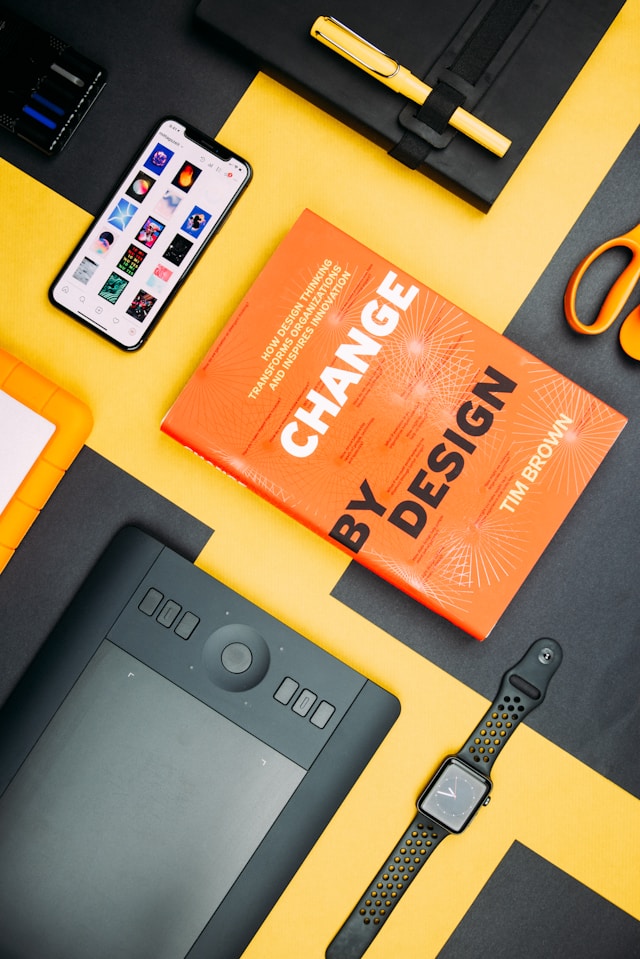Every masterful UX designer has one thing in common: their careers started with understanding the basics. If you want to be a masterful UX designer, too, you’ll need to familiarize yourself with UX foundations.
In today’s guide, we’ll discuss the most important foundational aspects of UX design to help you achieve that goal.

What Are the Foundations of UX?
Let’s get straight into the building blocks of great UX design. Below, you’ll find every crucial facet of UX, starting with user-centered design.
1. User-Centered Design
This foundation of user experience design may seem a little obvious. After all, if you’re designing for a target user base, they are obviously going to be your top priority.
However, many new UX designers fall short here because they don’t always realize that user-centered design is iterative. You must consider the users’ needs, goals, and desires from the beginning to the end of a project.
If you don’t, you’ll struggle to align your designs with your project’s goals, allowing personal bias to influence your decisions.
To effectively adopt the user-centered design approach, you need ample user involvement, frequent user feedback, and, of course, user empathy.
User empathy is something that you can achieve with the next foundation of UX.

2. User Research
You can’t have great UX design without thorough, in-depth user research. User research allows you to delve deep into your users’ needs, desires, expectations, preferences, and pain points.
You can determine what users do and why they do what they do from both qualitative and quantitative research data. From such data, you can ideate relevant problem statements to guide your design process and validate your design decisions.
With a combination of UX research methods, you will ensure that your designs reflect and solve your target users’ problems.
3. Usability
Before your products can be enjoyable, they must first be usable. That’s why, as a budding UX designer, you must prioritize usability.
Usable products are easy to navigate and efficient to use, all while contributing to the users’ engagement. Of course, you don’t just simply create usable products.
To truly evaluate your product’s usability, you need to conduct various usability testing methods with users. The feedback you receive from these testing sessions will help you optimize your product’s usability.

4. Information Architecture
Treat information architecture (IA) as the blueprint of your user’s interactions with your product.
Effective IA will allow users to rely on their intuition to navigate your digital product. Creating such IA means arranging and organizing your product’s content in the most logical and clear way possible.
Remember, you need to incorporate your users into your IA designs. For that reason, UX designers will conduct card-sorting sessions to understand how their users would categorize their product’s content naturally.
They’ll then implement their users’ categorizations into their designs for maximum user engagement and ease of use.
5. Visual Design
You may think that being a UX designer means that you don’t have to think much about your product’s visuals. A product’s visuals are something that only a UI designer contends with, right? Well, not quite.
UI designers focus on designing the static and interactive elements of a product’s user interface. These elements have a direct impact on the user experience, making UI design integral to UX and, thus, your role.
Every color, typographic element, shape, image, line, and layout influences your product’s aesthetics and functionality. So, we recommend looking into the UI design principles to understand how to create user-centric visuals and collaborate more effectively.

6. Accessibility
No modern design, whether UX web design or UX mobile design, should exclude any type of user.
Designing with accessibility in mind ensures that all users, regardless of cognitive or physical ability, can enjoy your products.
Not only do you need to create accessible designs, but you also need to test them regularly. This is important; complying with accessibility laws is not only morally right, but it is also a legal requirement.
Tip: Consult the Web Content Accessibility Guidelines (WCAG) 2.2 when designing your digital products.
How To Set Foundations for UX Research
The foundations of UX research are equally important as the foundations of UX design. To build sturdy UX research foundations, follow these steps:
- Clarify what you want your project to achieve (improving user satisfaction, for example).
- Align your project’s goals with your business goals (increasing your conversion rates, for instance).
- Define any constraints or obstacles you’ll face in your research process.
- Decide on the tools and resources you’ll need to conduct your research.
- Conduct user surveys and user interviews to define your project’s problem statement.
- Choose the most appropriate research methods, considering your project’s budget and deadline, as well as your most needed insights.
- Recruit participants that accurately mirror your target user base.
- Establish your research hypotheses that you can feasibly test with your chosen research methods.
- Write up close-ended/open-ended research questions, ensuring that they aren’t leading and are free of bias.
- Conduct your research methods and analyze the data to identify patterns in the users’ behaviors.
- Create user personas to segment, contextualize, and represent your users with demographic and psychographic data.
- Hand over the actionable insights from your research data to your UX design team to aid the design process.
Learning UX Foundations: Let Page Flows Help You
The successful UX designers you aspire to be like started by learning every foundation, UX design principle, and design phase. If you want to follow in their footsteps, you, too, will need such knowledge. You’ll also need to learn what great UX design looks like in action. Page Flows can help you with that.
Page Flows plays host to a wealth of high-quality, annotated user flow recordings and screenshots. The flows we collect will show you what intuitive user navigation looks like, inspiring you to elevate your own designs.
What’s more, our flows are as versatile as they are inspirational, spanning dozens of big-name brands and industries. From books to biotechnology, we document a vast array of versatile user journeys, meaning you’ll never lack the perfect inspiration.
Our mobile and desktop user flows, starting with onboarding flows and ending with logging-out flows, will prove monumentally beneficial. You know your UX foundations; let’s take your skills to the next level together. Go to Page Flows now to learn how to create superior digital products!
FAQs
Why is understanding the foundations of UX important?
Understanding the foundations of UX is crucial because it’s the only way of improving the user’s experience. Without mastering the basics, you’d create products that users didn’t want or need, which would negatively impact your business.
What is foundational research in UX?
Foundational research, or exploratory research, precedes any work that a UI or UX designer does. This research clarifies previously unknown problem statements and the users’ needs, desires, and pain points.
What is the main purpose of UX?
The main purpose of UX is to utilize the knowledge of the user to create engaging, helpful, and intuitive digital products.





